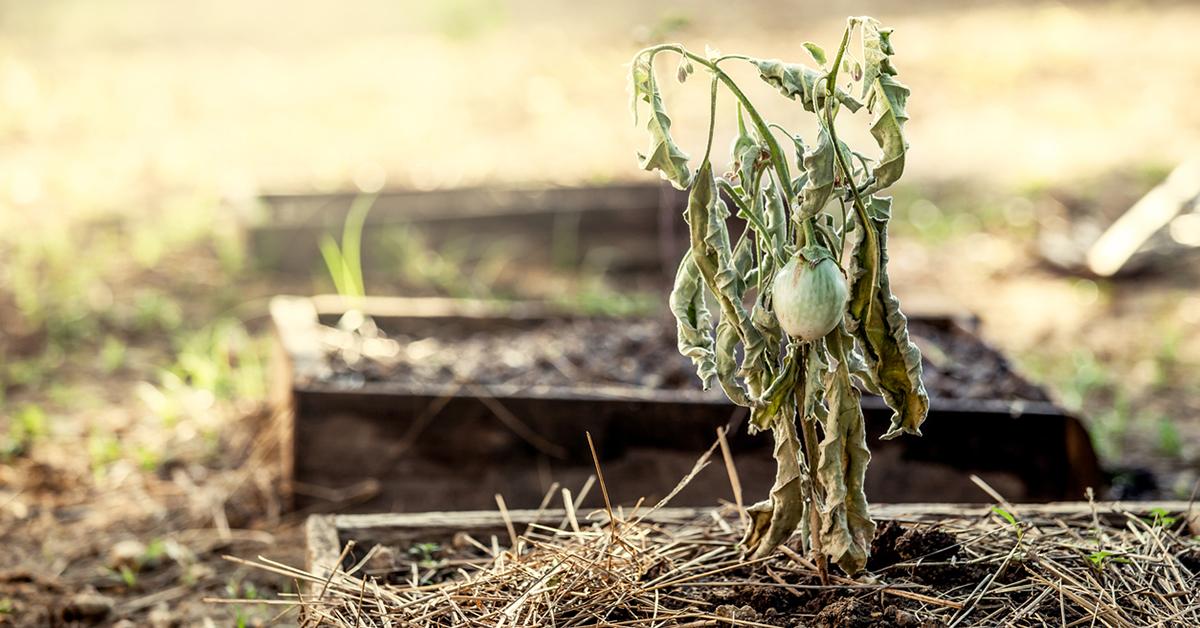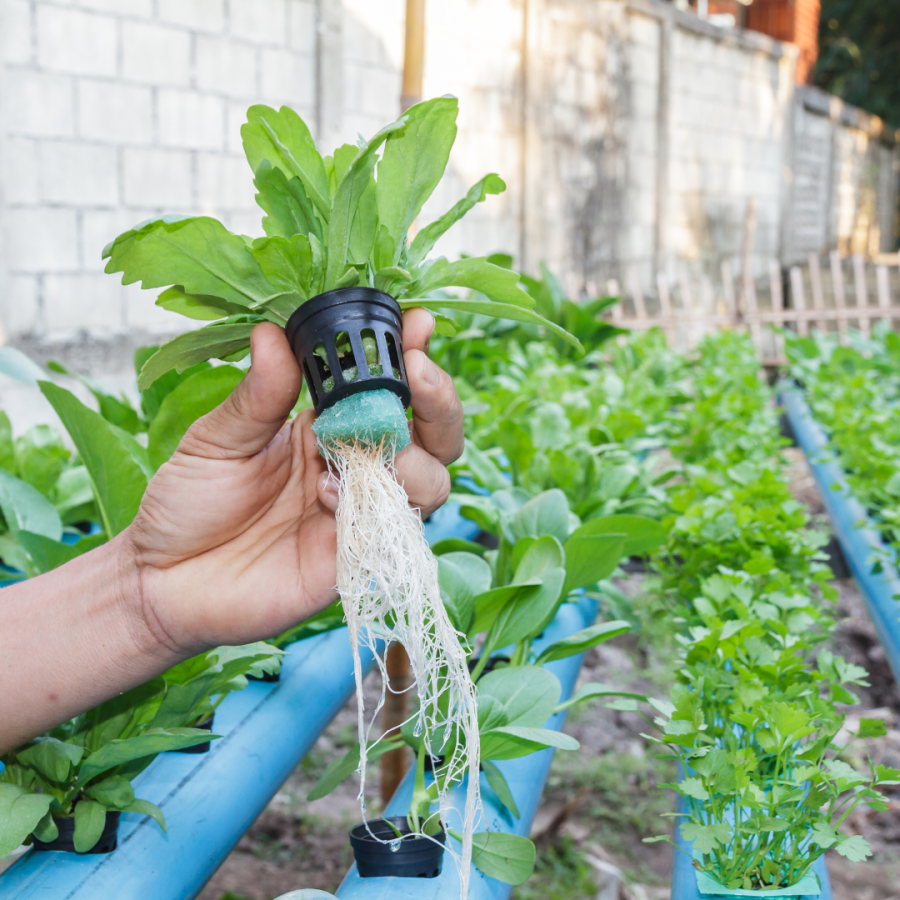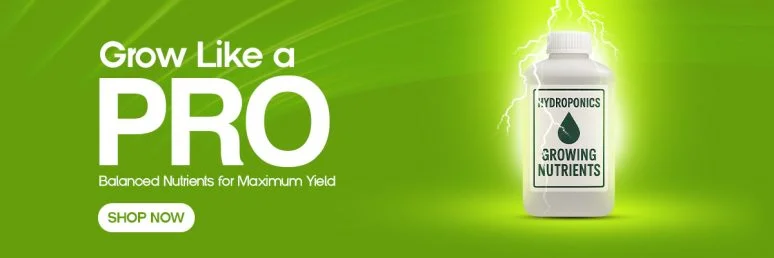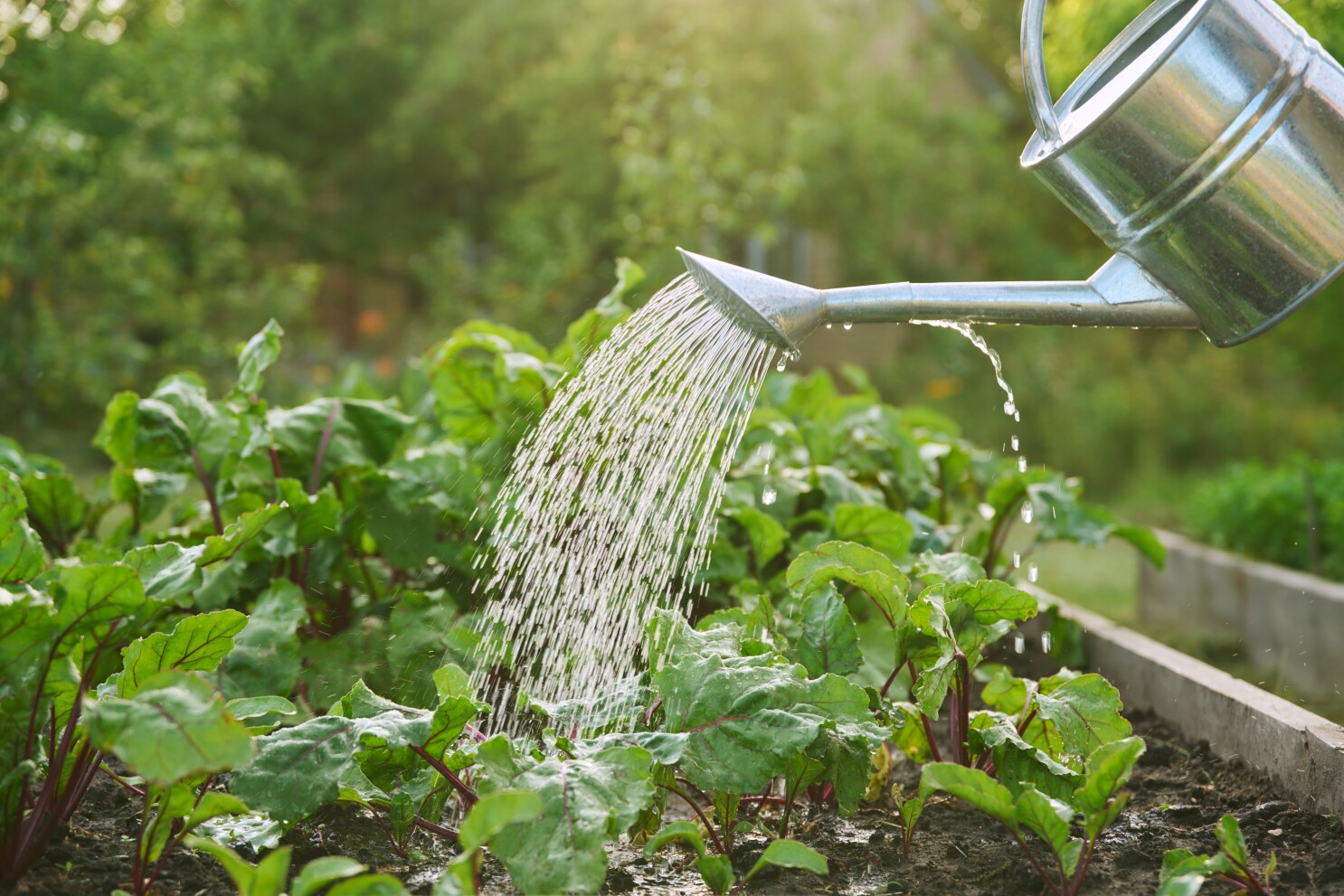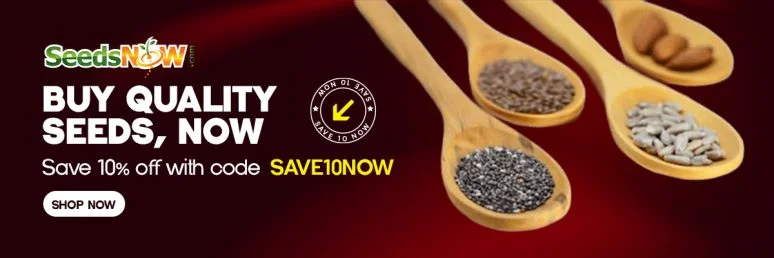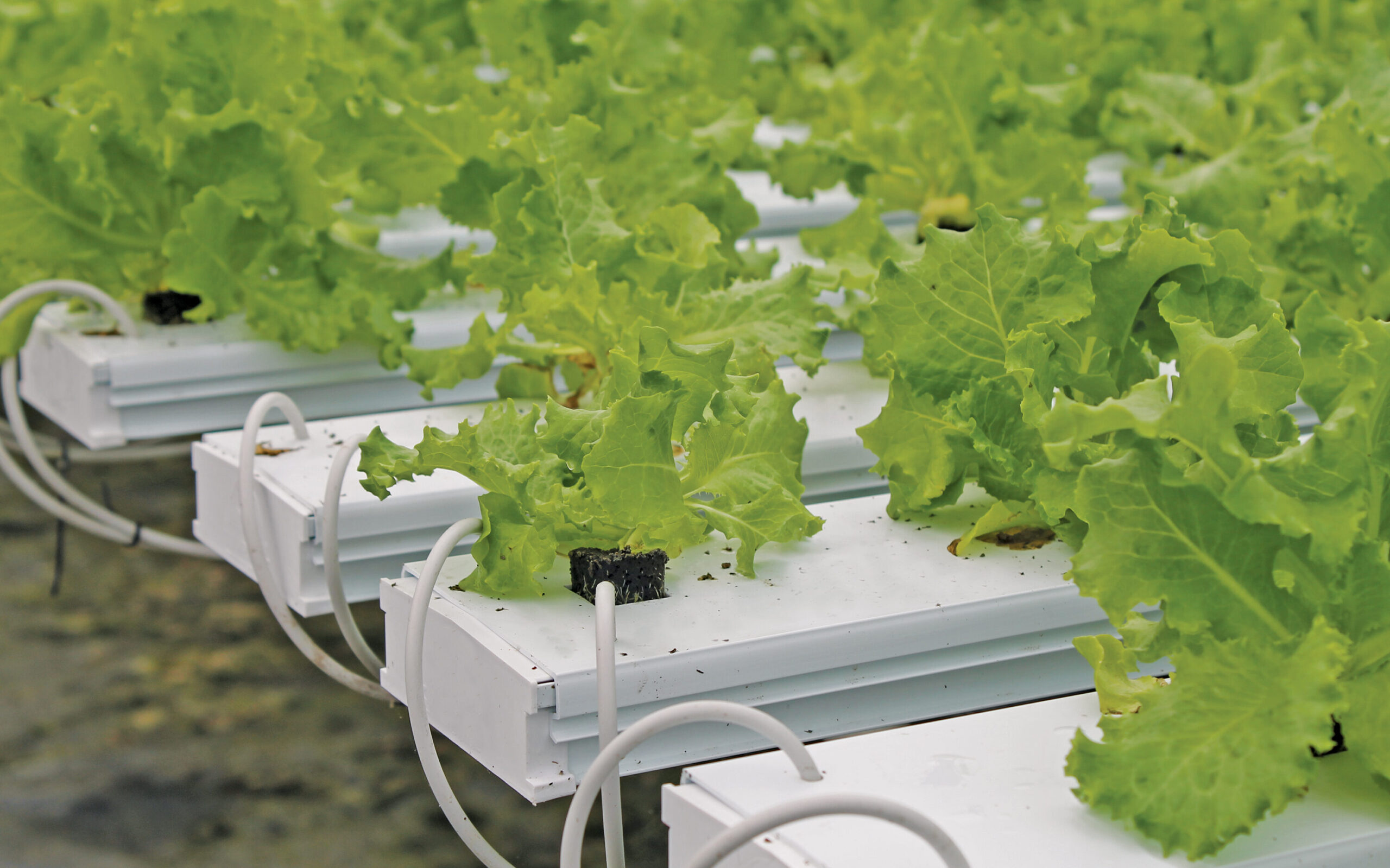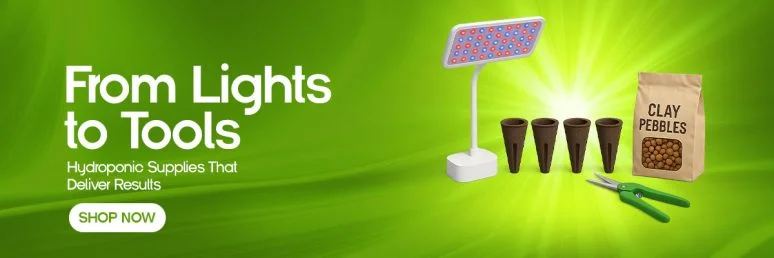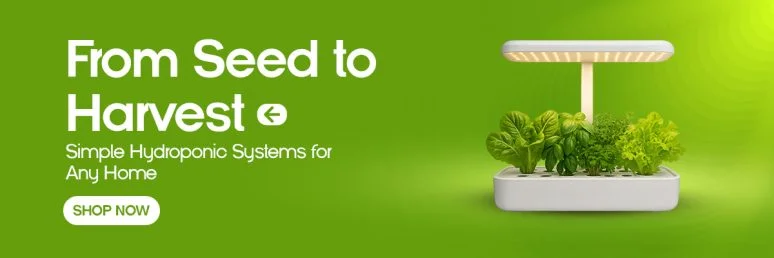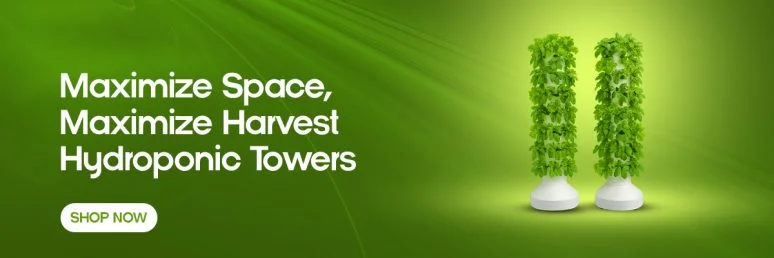How to Keep Hydroponic Plants Alive and Prevent Common Mistakes
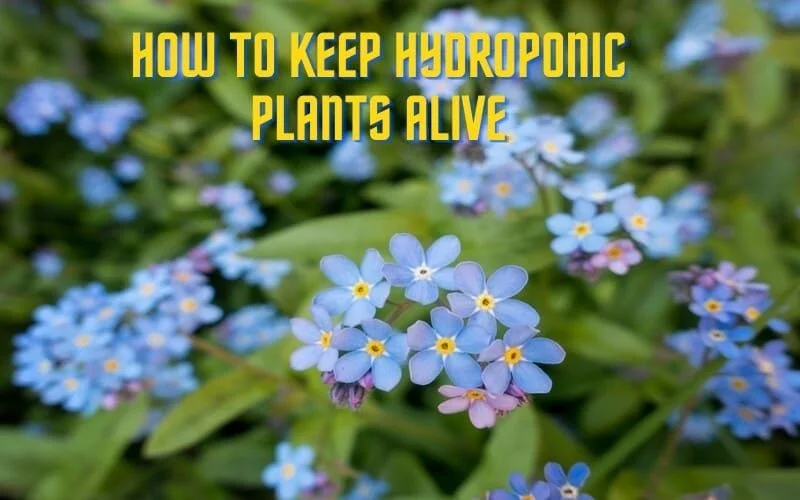
Key Takeaways
- Successful hydroponic growing depends on maintaining proper nutrient solution balance, with pH levels between 5.5-6.5 and appropriate EC/PPM ranges for your specific plants.
- Daily monitoring (visual inspection, pH/EC testing, equipment checks) is essential for catching problems before they become fatal to your plants.
- The three biggest hydroponic plant killers are improper pH levels, inadequate dissolved oxygen, and contaminated water or nutrient solutions.
- Water quality is fundamental – testing and treating your source water before adding nutrients can prevent numerous growing problems.
- GrowGeneration offers specialized hydroponic supplies and expert guidance to help you maintain thriving plants in any hydroponic system.
Keeping hydroponic plants alive isn’t just about adding water and nutrients – it’s about creating and maintaining the perfect environment for them to thrive. When plants struggle in a hydroponic system, they’re sending clear signals that something in their carefully balanced world needs attention. With the right knowledge and a proactive approach, you can prevent most hydroponic growing problems before they threaten your garden. GrowGeneration’s specialized hydroponic supplies are designed to help maintain this delicate balance that plants need to flourish in soilless systems.
Unlike soil gardening, where the growing medium provides some buffering against mistakes, hydroponics offers little margin for error. This precision is both its greatest strength and its biggest challenge for beginners. When you master the fundamentals, you’ll be rewarded with faster growth rates and higher yields than traditional gardening could ever provide.
Must-Know Hydroponic Success Factors
Successful hydroponic growing hinges on four critical factors: balanced nutrients, proper pH levels, adequate oxygen, and appropriate light. Each element must be monitored and maintained within specific ranges that vary depending on your plants and system type. Missing just one of these factors can quickly lead to plant stress and eventual failure. The good news is that hydroponic systems give you complete control over these variables, allowing for precision adjustments impossible in soil gardening.
Why Hydroponic Plants Die (And How to Prevent It)
“Hacks to Save Your Dying Plants” from www.greenmatters.com and used with no modifications.
Most hydroponic plant deaths stem from imbalances in their growing environment rather than disease or pests. Understanding the warning signs can help you intervene before problems become fatal. Plants communicate their distress through visual cues like leaf discoloration, wilting, or stunted growth. These symptoms often appear days before serious damage occurs, giving attentive growers time to make corrections.
The Top 3 Killers of Hydroponic Plants
The three most common causes of hydroponic plant failure are improper pH levels, inadequate dissolved oxygen, and contaminated water or nutrient solutions. pH imbalances prevent plants from absorbing nutrients even when they’re present in sufficient quantities. Low oxygen levels in the root zone lead to root rot and create conditions where harmful pathogens thrive. Contamination from algae, bacteria, or chemical residues can quickly spread through an entire system, devastating your crop before symptoms become obvious.
Prevention begins with daily monitoring and maintaining sterile conditions. Use a quality pH meter to keep levels between 5.5-6.5 for most plants. Ensure adequate oxygenation through air stones, falling water, or specialized pumps. And always start with clean equipment and high-quality water sources to minimize contamination risks.
Common Warning Signs Your Plants Are Struggling
Your plants provide clear indicators when conditions aren’t optimal. Yellowing leaves often signal nutrient deficiencies or pH problems preventing nutrient uptake. Brown leaf edges typically indicate nutrient burn from overly concentrated solutions. Wilting despite adequate water points to oxygen deficiency or root problems. Stunted growth usually means multiple factors need attention, from light intensity to nutrient balance.
Document these symptoms when they appear, along with your system readings and recent changes. This record helps identify patterns and prevents repeated mistakes. Most importantly, act quickly when warning signs appear – hydroponic plants can decline rapidly once stressed. For more insights, check out these common mistakes in hydroponic gardens.
Perfect Your Nutrient Solution for Thriving Plants
“Hydroponics: Regrowing Plants in Water …” from takecareoftexas.org and used with no modifications.
The nutrient solution is the lifeblood of your hydroponic system. It must contain all essential macro and micronutrients in the correct proportions for your specific plants. Pre-formulated hydroponic nutrients eliminate the guesswork for beginners, but understanding what your plants receive remains important. Different growth stages require different nutrient profiles – generally higher nitrogen during vegetative growth and more phosphorus and potassium during flowering or fruiting. To avoid common mistakes in hydroponic gardens, make sure to adjust the nutrient solution accordingly.
Water temperature significantly impacts nutrient availability and oxygen levels. Maintain solution temperatures between 65-75°F (18-24°C) for most plants. Warmer solutions hold less oxygen and promote unwanted bacterial growth, while cooler solutions slow nutrient uptake and plant metabolism.
- Leafy greens thrive with lower EC levels (0.8-1.2 mS/cm)
- Fruiting plants need higher EC levels (1.8-2.4 mS/cm)
- Seedlings require very low EC levels (0.5-0.8 mS/cm)
- Root vegetables typically prefer mid-range EC levels (1.4-1.8 mS/cm)
- Herbs generally need 1.0-1.6 mS/cm for optimal growth
Exact EC and PPM Ranges for Different Plant Types
Electrical Conductivity (EC) and Parts Per Million (PPM) measurements tell you the concentration of dissolved nutrients in your solution. Different plants have specific preferred ranges that optimize their growth. Leafy greens like lettuce and spinach prefer lower concentrations (0.8-1.2 mS/cm or 400-600 PPM), while fruiting plants like tomatoes and peppers need higher levels (1.8-2.4 mS/cm or 900-1200 PPM). Seedlings of any variety are sensitive to nutrient strength and require diluted solutions (0.5-0.8 mS/cm or 250-400 PPM) until established. For instance, if you’re interested in growing microgreens, you can learn more about how to grow microgreens hydroponically.
Seasonal adjustments are often necessary as temperature and humidity changes affect transpiration rates and nutrient uptake. During hot weather, plants typically use more water than nutrients, potentially concentrating your solution over time. In cooler conditions, slower growth means lower nutrient demands. Regular EC testing helps you maintain optimal ranges regardless of environmental fluctuations. For more information on managing humidity levels, check out our guide on controlling humidity in a grow tent.
When and How to Change Your Nutrient Solution
Complete nutrient solution changes should happen every 1-2 weeks, depending on your system size and plant density. Larger reservoirs with fewer plants may stretch to 14 days, while densely planted smaller systems often need weekly refreshes. Never wait until plants show stress signals – by then, damage has already begun. Mark your calendar and treat solution changes as non-negotiable maintenance.
When changing solutions, take the opportunity to inspect the reservoir for any buildup, residue, or discoloration. A quick wipe-down with hydrogen peroxide solution (3%) helps eliminate any developing biofilm or algae before it becomes problematic. Always pre-mix and pH-adjust your new solution before adding it to your system to avoid shocking your plants with sudden environmental changes.
pH Management: The Make-or-Break Factor
Maintaining proper pH is arguably the most critical aspect of hydroponic growing. Even with perfect nutrient levels, plants starve if pH drifts outside the optimal 5.5-6.5 range for most crops. This happens because each nutrient has a specific pH range where it remains available for root absorption. Outside these ranges, nutrients become chemically locked and unusable to plants despite being physically present in your solution. To understand more about how plants get nutrients in hydroponics, you can explore this detailed guide.
Test pH daily using a quality digital meter rather than less accurate test strips. Calibrate your meter regularly according to manufacturer instructions – an inaccurate reading is worse than no reading at all. Make small, incremental adjustments using proper pH-up and pH-down solutions specifically formulated for hydroponics. Avoid household acids or bases which can introduce harmful compounds or damage roots.
Avoiding Nutrient Lockout: Signs and Solutions
Nutrient lockout occurs when plants cannot access available nutrients, typically due to pH imbalance or nutrient antagonism (when excess of one nutrient blocks absorption of another). Signs include yellowing between leaf veins, stunted new growth, and overall plant weakness despite proper nutrient solution readings. If you suspect lockout, first check and correct pH levels, then consider performing a system flush with clean, pH-balanced water before introducing fresh nutrient solution.
For recurring lockout issues, consider using enzymatic cleaners designed for hydroponic systems. These break down salt buildup and organic matter that can contribute to lockout conditions. Some growers also incorporate beneficial microbes into their nutrient solutions to help maintain root zone health and improve nutrient availability.
Water Quality Essentials for Healthy Hydroponic Systems
“Ask the Master Gardener: It’s been too …” from www.brainerddispatch.com and used with no modifications.
Your water source fundamentally impacts every aspect of hydroponic growing. Municipal water often contains chlorine, chloramines, and various minerals that can help or harm your plants. Well water frequently has high mineral content that affects starting EC readings and can unbalance carefully formulated nutrients. Even filtered water may contain compounds that influence plant health over time. For more insights on how plants get nutrients in hydroponics, you can explore this detailed guide.
The foundation of successful hydroponics is understanding what’s in your water before adding anything else. This knowledge allows you to make informed adjustments to your nutrient formulations and anticipate potential problems before they affect your plants.
Testing Your Source Water Before Starting
Before mixing nutrients, test your water source for pH, EC/TDS, and temperature. These baseline readings are essential for calculating accurate nutrient additions. Municipal water reports (available from your local utility) provide detailed information about mineral content and treatments that might affect plant growth. For well water or other private sources, consider a comprehensive water test to identify potential issues like heavy metals or biological contaminants.
Keep records of your source water parameters across seasons, as many municipal supplies change their treatment protocols seasonally, affecting your growing environment. What works perfectly in winter might need adjustments during summer months due to these invisible changes in your water supply.
Fixing Hard Water Problems
Hard water containing high levels of calcium and magnesium carbonates presents special challenges for hydroponic growers. These minerals buffer pH, making adjustments more difficult, and can precipitate out of solution, causing equipment clogging and nutrient imbalances. If your source water exceeds 200 PPM (approximately 0.4 EC) before adding nutrients, consider treatment options.
Reverse osmosis (RO) systems provide the most complete solution by removing 95-99% of all dissolved solids, giving you a clean slate for precise nutrient formulation. While requiring some initial investment, RO systems quickly pay for themselves by preventing countless growing problems. If RO isn’t feasible, water softening pillows designed for hydroponics can reduce hardness without introducing sodium like traditional home water softeners. For those interested in alternative methods, you can also grow microgreens hydroponically to explore different hydroponic techniques.
Water Source Comparison for Hydroponics
Source Type: Reverse Osmosis Water
Starting EC: 0.01-0.05 mS/cm
Advantages: Complete control over nutrient profile, consistent results
Challenges: Requires equipment investment, wastes some waterSource Type: Filtered Tap Water
Starting EC: 0.2-0.5 mS/cm (varies widely)
Advantages: Convenient, contains beneficial trace elements
Challenges: Variable composition, may contain chlorine/chloraminesSource Type: Well Water
Starting EC: 0.3-1.5+ mS/cm
Advantages: No chlorine, often contains beneficial minerals
Challenges: May contain excessive minerals, potential contaminants
Dealing With Chlorine and Chloramines
Municipal water supplies typically contain chlorine or chloramines to eliminate harmful bacteria. While making water safe for human consumption, these chemicals can damage beneficial microorganisms in the root zone and stress sensitive plants. Simple chlorine evaporates when water is left exposed to air for 24 hours, but chloramines (increasingly common in city water) require chemical neutralization.
Hydroponic-specific water conditioners instantly neutralize both chlorine and chloramines without introducing harmful residues. For organic growers, activated carbon filtration effectively removes these chemicals without chemical additives. Whichever method you choose, always verify chlorine removal before introducing the water to sensitive seedlings or established systems.
Environmental Control: Temperature, Humidity and Airflow
Plants in hydroponic systems respond dramatically to their surrounding environment. Temperature affects metabolism and growth rates, humidity influences transpiration and nutrient uptake, and airflow prevents disease while strengthening stems. Creating the ideal environment requires understanding how these factors interact and how they change throughout the day-night cycle.
Most hydroponic plants perform best when daytime temperatures range between 65-80°F (18-27°C) with a slight drop at night. Humidity requirements vary by growth stage, with seedlings preferring 65-70% relative humidity, while flowering plants generally perform better at 40-50% to prevent mold issues. Continuous gentle airflow throughout the growing area helps maintain consistent conditions while preventing the development of microclimates that can harbor pests or disease.
Ideal Temperature Ranges for Root Zones vs. Ambient Air
Root zone temperature often requires different management than ambient air temperature. Most plants’ roots function optimally between 65-70°F (18-21°C), even when the surrounding air is warmer. Cooler root zones increase oxygen solubility in the nutrient solution while slowing potential pathogen growth. During hot weather, consider using cool water additions, insulating reservoirs, or dedicated water chillers to maintain these ideal root temperatures.
Root Health Issues: Identification and Treatment
Healthy roots are the foundation of successful hydroponic growing. White, crisp roots with visible fine hairs indicate optimal health, while brown, slimy, or foul-smelling roots signal serious problems requiring immediate attention. Root rot, caused by Pythium and other pathogens, spreads rapidly in hydroponic systems when oxygen levels drop too low or temperatures rise above 72°F (22°C). Early detection through regular root zone inspections can prevent system-wide contamination. For more insights, check out common mistakes in hydroponic gardens.
Treatment begins by improving oxygenation with additional air stones or adjusting water flow patterns. For mild cases, hydrogen peroxide (3% food-grade solution at 2-3ml per gallon) can help eliminate pathogens while providing extra oxygen. For more severe infections, consider beneficial microbe products containing Bacillus subtilis or Trichoderma strains that compete with harmful organisms. Always clean affected equipment thoroughly with hydrogen peroxide or approved hydroponic sanitizers before reintroducing plants.
Nutrient Deficiencies vs. Toxicities: Telling the Difference
Distinguishing between nutrient deficiencies and toxicities can be challenging, as they sometimes produce similar symptoms. Deficiencies typically appear first in older leaves for mobile nutrients (nitrogen, phosphorus, potassium) and in newer growth for immobile nutrients (calcium, iron, boron). Toxicities generally cause burned leaf edges, unusual discoloration patterns, and sometimes twisted new growth. The location and progression of symptoms provide critical diagnostic clues.
When diagnosing nutrient problems, consider recent changes to your system. A sudden pH shift can trigger apparent deficiencies overnight, while gradual concentration of nutrients during hot weather might cause toxicity symptoms. Check EC levels first – if they’re above recommended ranges for your plants, dilute the solution before making other changes. If EC is appropriate but symptoms persist, adjust specific nutrients based on visual diagnosis.
| Symptom | Likely Deficiency | Likely Toxicity | Action Steps |
|---|---|---|---|
| Yellow leaves with green veins | Iron or Magnesium | Rarely a toxicity sign | Check pH first (should be 5.5-6.5), add specific supplement if pH is correct |
| Burned leaf edges | Potassium | Nutrient solution too concentrated | Measure EC/PPM; dilute if high, otherwise add potassium |
| Purple stems/undersides | Phosphorus | Rarely a toxicity sign | Verify solution temperature (cold can block phosphorus) |
| Twisted new growth | Calcium | Boron or excessive PGRs | Check water hardness and calcium levels |
When correcting nutrient issues, make one change at a time and wait 3-5 days to evaluate results before making additional adjustments. Plants need time to respond to changes, and overlapping corrections can create new imbalances. Document all changes and outcomes to build a personalized knowledge base for your specific system and plant varieties.
For recurring nutrient problems, consider using a more complete nutrient solution with better micronutrient profiles. Single-part nutrients are convenient but often lack the precision of multi-part systems that allow for customization based on growth stage and plant needs. The small additional effort pays dividends in plant health and yield.
Equipment Failures: Emergency Responses
Equipment failures can rapidly become emergencies in hydroponic systems, where plants depend entirely on functioning technology for their survival. Power outages, pump failures, or controller malfunctions can stress or kill plants within hours, especially in systems with limited water reserves. Every hydroponic grower should have an emergency response plan ready before problems occur, including understanding how plants get nutrients in hydroponics.
For short power outages (under 4 hours), most systems can maintain adequate conditions if ambient temperatures are moderate. For longer outages, consider battery backup systems for critical pumps and air stones. Hand aeration by stirring nutrient solutions or manually pouring water over growing media can temporarily maintain oxygen levels. Extreme heat during outages may require covering plants with reflective material to reduce transpiration stress until systems are restored.
Redundancy in critical components provides the best insurance against catastrophic failures. Keep spare pumps, air stones, and timers on hand, pre-tested and ready for immediate installation. For sophisticated systems, consider installing alert systems that notify you via smartphone when parameters like temperature or humidity fall outside safe ranges, allowing for rapid intervention before plant damage occurs.
Hydroponic System-Specific Care Guide
“Hydroponic Growing Systems …” from www.growspan.com and used with no modifications.
Each hydroponic system type has unique maintenance requirements and potential failure points that growers must understand. Deep Water Culture systems offer simplicity but require vigilant oxygenation, while Nutrient Film Technique systems depend on consistent flow rates and channel cleanliness. Ebb and Flow systems need reliable timers and unobstructed drain lines, and Aeroponic systems demand precise misting schedules and nozzle maintenance.
The system you choose should match both your growing goals and your maintenance capacity. Low-maintenance systems like wicking or Dutch bucket setups provide more forgiveness for occasional neglect, while high-performance systems like aeroponics deliver exceptional growth rates but require constant monitoring. Most beginners find greatest success with Deep Water Culture or small-scale Ebb and Flow systems that balance performance with reasonable maintenance demands.
Deep Water Culture (DWC) Maintenance Tips
DWC systems require vigilant maintenance of dissolved oxygen levels through properly sized air pumps and regular cleaning of air stones that can become clogged with mineral deposits. Maintain water levels consistently, as fluctuations can stress roots by exposing them to air or submerging plant crowns. Consider installing water level indicators and top-off systems for larger setups to maintain optimal conditions between reservoir changes.
Nutrient Film Technique (NFT) Problem Prevention
NFT systems depend on consistent thin-film water flow, making pump reliability and channel cleanliness critical maintenance factors. Inspect channels weekly for root intrusion that might block flow, and maintain at least two separate pumps for redundancy in larger systems. Temperature management is especially important in NFT, as the shallow flowing nutrient solution can quickly heat beyond optimal ranges during warm weather, requiring additional cooling measures.
Ebb and Flow System Optimization
Ebb and Flow (flood and drain) systems require regular inspection of drain lines and overflow protection to prevent flooding. Clean fill/drain fittings monthly to remove mineral buildup that can restrict flow rates and potentially damage pumps. Verify timer accuracy weekly, as incorrect flooding cycles can either waterlog roots or leave them dangerously dry, with either extreme causing rapid plant decline.
Aeroponic System Special Considerations
Aeroponic systems deliver exceptional growth rates but require meticulous maintenance of misting nozzles that can clog from mineral deposits. Clean nozzles weekly and keep multiple spares on hand for quick replacement. Maintain backup pressure systems, as roots exposed to air without regular misting can dry out and die within hours. Monitor pressure gauges daily and install pressure-drop alarms for early warning of potential nozzle or pump issues.
Your Hydroponic Success Depends on These Fundamentals
“How To Know If Plant Is Dead Or Alive” from paudhshala.com and used with no modifications.
Successful hydroponic growing ultimately comes down to consistency in environmental controls, regular monitoring, and proactive maintenance. The most elaborate system will fail without daily attention to fundamentals like pH, EC/PPM, temperature, and oxygen levels. Develop and follow a routine that includes these checks, and your plants will reward you with vigorous growth and abundant harvests.
Remember that hydroponics is both a science and an art. While precise measurements provide essential guidance, developing an intuitive understanding of your plants’ needs comes with experience. Keep detailed records, learn from both successes and failures, and continuously refine your approach based on results. With practice, you’ll develop the confidence to make adjustments based on plant responses rather than rigid formulas, achieving the true mastery that produces exceptional results in soilless growing.
Frequently Asked Questions
New hydroponic growers often share common questions about maintaining healthy plants. The answers below address these typical concerns with practical solutions based on proven growing principles. While general guidelines are helpful, remember that specific plant varieties and local conditions may require adjustments to these recommendations.
Always prioritize observation and documentation of your specific system’s performance over general advice. The best growers develop personalized protocols based on direct experience with their particular plants, equipment, and environment. These FAQs provide starting points rather than rigid rules for your hydroponic journey.
How often should I change my hydroponic nutrient solution?
For most small to medium hydroponic systems, complete nutrient solution changes every 7-10 days provide optimal conditions for plant growth. Large commercial systems with sophisticated monitoring equipment may stretch this to 14 days, while small systems with high plant density might require twice-weekly changes. Between full changes, monitor EC/PPM levels daily and top off with fresh water (not nutrient solution) to replace what plants transpire, preventing solution concentration and potential nutrient imbalances.
Can I use tap water for my hydroponic system?
Tap water can work well for hydroponics if properly treated and tested. First, measure its baseline EC/PPM to understand what minerals are already present. If readings exceed 0.4 EC (approximately 200 PPM), consider diluting with reverse osmosis water or adjusting nutrient formulations to account for existing minerals. Allow chlorine to evaporate by leaving water exposed to air for 24 hours, or use dechlorinating products for immediate use.
For water containing chloramines (increasingly common in municipal supplies), use specific chloramine-removing products, as aeration alone won’t eliminate these compounds. Finally, always adjust the pH of your water before adding nutrients, as tap water pH typically ranges from 7.0-8.5, well above the 5.5-6.5 range optimal for most hydroponic plants.
Why are my hydroponic plants growing slowly despite perfect nutrients?
When nutrient parameters appear optimal but growth remains sluggish, temperature and light are the most likely limiting factors. Verify that root zone temperatures stay between 65-72°F (18-22°C), as both higher and lower temperatures significantly slow nutrient uptake. Examine light intensity and duration, as insufficient photosynthetically active radiation (PAR) creates an energy bottleneck regardless of available nutrients. For indoor growing, consider upgrading lighting or adjusting fixture height if plants are receiving less than 14-16 hours of adequate intensity light. You might also want to explore the difference between red and blue LED grow lights to optimize your setup.
How do I prevent algae growth in my hydroponic system?
Algae thrive in nutrient-rich water exposed to light, making prevention a multi-faceted approach. Start by eliminating light exposure to your nutrient solution using opaque reservoir materials, covering channels, and using dark tubing. For system components that must remain visible for monitoring, like sight tubes, use green or black coloring to block the light wavelengths algae utilize for photosynthesis.
Maintain water temperatures below 70°F (21°C) to slow algae reproduction, and consider adding food-grade hydrogen peroxide (3% solution at 2-3ml per gallon) weekly as a preventative measure. Some growers successfully incorporate UV sterilizers in return lines to eliminate algae spores before they can establish colonies. Remember that while algae itself rarely harms plants directly, it competes for nutrients and oxygen while potentially harboring plant pathogens.
Algae Prevention Checklist
To effectively manage algae growth in your hydroponic system, ensure you are using the correct lighting. Understanding the difference between red and blue LED grow lights can significantly impact your system’s efficiency and algae control.
✓ Use opaque materials for all system components
✓ Cover nutrient solution surfaces completely
✓ Maintain water temperatures below 70°F (21°C)
✓ Clean systems thoroughly between crop cycles
✓ Add hydrogen peroxide weekly (2-3ml/gallon of 3% solution)
✓ Consider UV sterilization for recirculating systems
✓ Maintain optimal nutrient levels (prevent excess)
Regular system cleaning between crop cycles with hydrogen peroxide solution (3% at 60ml per gallon) or dedicated hydroponic system cleaners eliminates established algae and prevents quick recolonization. This proactive maintenance proves far easier than removing entrenched algae from an operating system.
What’s the minimum equipment needed for a basic hydroponic setup?
A functional beginner’s hydroponic system requires surprisingly little equipment to get started. At minimum, you’ll need a reservoir (food-safe container), a quality hydroponic nutrient solution, an air pump with air stone for oxygenation, a pH testing kit with adjustment solutions, and some method of supporting plants above the nutrient solution. For smaller plants like lettuce or herbs, simple net pots filled with expanded clay pellets work effectively, while larger plants may require more substantial support systems.
Beyond these basics, a digital pH meter provides greater accuracy than test kits, and an EC/TDS meter allows precise nutrient concentration management. A timer for air pumps ensures consistent oxygenation, and some form of environmental monitoring helps maintain optimal temperature and humidity ranges. While sophisticated systems offer automation and precision, many successful growers start with these fundamentals and expand as their experience and requirements grow.
Remember that quality matters more than quantity when selecting equipment. A reliable pH meter and nutrient solution will contribute more to success than numerous accessories of questionable quality. Focus initial investments on measurement tools and plant support systems, adding automation and monitoring capabilities as your skills and system complexity increase.
For tailored advice on building or expanding your hydroponic system with professional-grade components, GrowGeneration’s hydroponics experts can help you select the ideal equipment for your specific growing goals. Additionally, you can learn about common mistakes in hydroponic gardens to avoid potential pitfalls in your setup.
Hydroponic gardening offers a unique way to grow plants without soil, using a nutrient-rich water solution. One key aspect of this method is ensuring that plants receive all the necessary nutrients for healthy growth. If you’re curious about how plants absorb nutrients in a hydroponic system, you can learn more about how plants get nutrients in hydroponics to optimize your garden’s success.
